
Yeomanry is a designation used by a number of units and sub-units in the British Army Reserve which are descended from volunteer cavalry regiments that now serve in a variety of different roles.
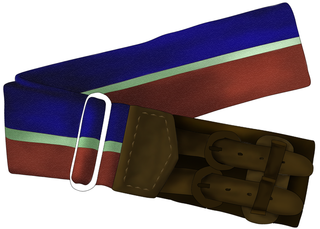
A stable belt is a striped coloured belt worn at times by the armed forces of the United Kingdom, other Commonwealth countries, and a few other countries including Denmark, Brazil and Lebanon. The stripes vary by regiment and corps, identifying the wearer's unit. In Brazil and Lebanon they are known as gymnastic belts.
Options for Change was a restructuring of the British Armed Forces in summer 1990 after the end of the Cold War.
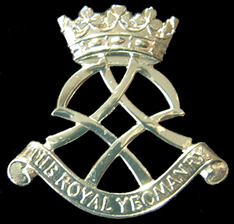
The Royal Yeomanry (RY) is the senior reserve light cavalry regiment of the British Army. Equipped with Supacat Jackal variants, their role is to conduct mounted and dismounted formation reconnaissance. The Regimental Headquarters is located in Leicester, with squadrons in Fulham, Nottingham, Dudley, Croydon, Telford, and Leicester. The regiment is part of the Royal Armoured Corps and is only reserve cavalry regiment to resubordinate into regular brigade as part of the Future Soldier Programme, which in turn arose from the Integrated Review of Security, Defence, Development and Foreign Policy published in March 2021.

The Royal Mercian and Lancastrian Yeomanry was a yeomanry regiment of the United Kingdom's Territorial Army. It served in the armoured replacement role, providing replacement tank crews for regular armoured regiments.

The Queen's Own Yeomanry (QOY) is one of the Army Reserve light armoured reconnaissance regiments.
The Formation Reconnaissance Regiment is a fighting unit provided by the Royal Armoured Corps or Household Cavalry. Previously it was known as a Armoured Reconnaissance Regiment.
Precedence is the order in which the various corps of the British Army parade, from right to left, with the unit at the extreme right being highest.
The West Midlands Regiment was a short-lived British Territorial Army regiment from 1999 until it was re-designated as 4th Battalion, Mercian Regiment, in 2007.
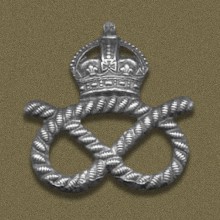
The Staffordshire Yeomanry (Queen's Own Royal Regiment) was a mounted auxiliary unit of the British Army raised in 1794 to defend Great Britain from foreign invasion. It continued in service after the Napoleonic Wars, frequently being called out in support of the civil powers. It first sent units overseas at the time of the Second Boer War and saw distinguished service in Egypt and Palestine in World War I. During World War II it gave up its horses and became a tank regiment, serving in the Western Desert and landing in Normandy on D-Day. Postwar the Staffordshire Yeomanry became part of the Queen's Own Mercian Yeomanry with one of the squadrons being designated 'Staffordshire Yeomanry' until 2021.
The Queen's Own Warwickshire and Worcestershire Yeomanry (QOWWY) was a regiment of the Royal Armoured Corps, forming part of the Territorial Army (TA). Following reductions in 1969 and 1971 respectively the regiment was reduced to two and later one company sized sub-unit in 1999. Following a reorganisation in 2021, there are now two successors to the regiment: one squadron in the Royal Yeomanry as light cavalry, and one squadron in the 37th Signal Regiment as a support squadron.
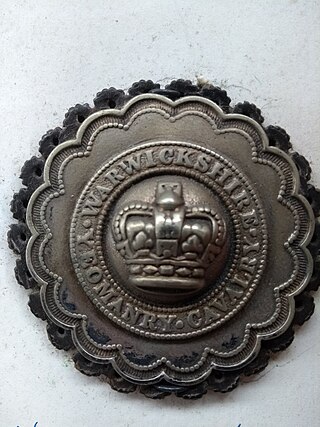
The Warwickshire Yeomanry was a yeomanry regiment of the British Army, first raised in 1794, which served as cavalry and machine gunners in the First World War and as a cavalry and an armoured regiment in the Second World War, before being amalgamated into the Queen's Own Warwickshire and Worcestershire Yeomanry in 1956. The lineage is maintained by B Squadron, part of The Royal Yeomanry.
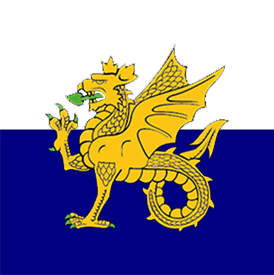
37th Signal Regiment is a military communications regiment of the Royal Corps of Signals, part of the British Army. The regiment was one of ten Territorial Army,, units formed following the complete reorganisation of the Territorial Army in 1967. Until the Army 2020 programme in 2012, the regiment provided national communications support and its squadrons providing support to the regional brigades, notable 143rd and 160th (Welsh) Brigades. However, from 2014 the regiment was re-roled and now paired with 2nd Signal Regiment supporting 1st Division.

The Home Service Force (HSF) was a Home Guard type force established in the United Kingdom in 1982. Each HSF unit was placed with either a Regular Army or Territorial Army regiment or battalion for administrative purposes and given that formation's title, cap badge and recruited from volunteers aged 18–60 with previous British forces experience. It was introduced to guard key points and installations likely to be the target of enemy special forces and saboteurs, so releasing other units for mobile defence roles. It was stood down in 1992.
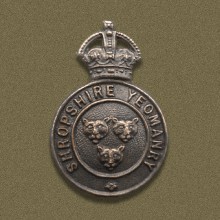
The Shropshire Yeomanry was a yeomanry regiment of the British Army, first raised in 1795, which served as a cavalry and dismounted infantry regiment in the First World War and as a cavalry and an artillery regiment in the Second World War. It was then amalgamated with the Shropshire Royal Horse Artillery.

The Queen's Own Worcestershire Hussars was a Yeomanry regiment of the British Army. First raised in 1794, it participated in the Second Boer War and World War I as horsed cavalry before being converted to an anti-tank regiment of the Royal Artillery for service in World War II. In 1956 it was amalgamated with the Warwickshire Yeomanry to form the Queen's Own Warwickshire and Worcestershire Yeomanry. The lineage is maintained by B Squadron, part of The Royal Yeomanry.

The Scottish and North Irish Yeomanry (SNIY) is a reserve Light Cavalry Regiment, formed in 2014, created out of the restructuring of the British Army's Army Reserve. It is operationally paired with The Royal Scots Dragoon Guards, based at Leuchars Station in Fife. The Regiment has numerous squadrons across Scotland and Northern Ireland.
The 4th (Volunteer) Battalion, The Worcestershire and Sherwood Foresters was a former territorial infantry battalion that existed for a short time towards the end of the Cold War. Following reductions to the Territorial Army (TA) in 1992, the battalion was disbanded with elements helping to form RHQ & HQ Sqn of 37 Signal Regiment, and 96 Signal Squadron. This squadron was then reduced to a signal troop in 2009, but continues to exist as part of 48 Signal Squadron.
The 3rd (Volunteer) Battalion, Staffordshire Regiment was a Territorial Army unit of the regular Staffordshire Regiment which was formed in 1988, but disbanded in 1999. The battalion's successor continues to serve in the Mercian Regiment to this day.











